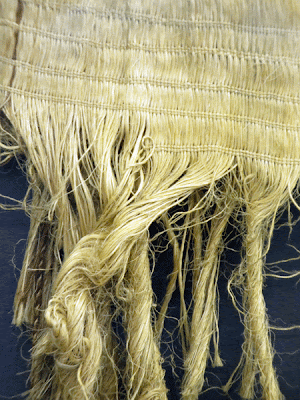 |
| Göttingen street and tower of Jacobi Church |
Last week I went on a trip to Germany to see some Cook-voyage collections in museums there. The first stop was Göttingen, in Lower Saxony. The Institute of Ethnology of the University of Göttingen houses one of the oldest and most important ethnographic collections in the world.
 |
| Institute of Ethnology, Georg-August-Universität Göttingen |
The collection was begun in 1773 when the naturalist Johann Friedrich Blumenbach obtained a significant cabinet of natural history items for the University from the natural history teacher Büttner. Several items from the South Seas were listed in a museum catalogue (Catalog. Musei Academici) dating from October 1778, and in 1782 three Cook-voyage collections were purchased from the London dealer and collector George Humphrey. The collections were a result of Blumenbach petitioning the councillors of Hanover to ask King George III of England, (then also prince-elector of Brunswick-Luneburg (later Hanover)) to purchase 'something of the surplus of foreign natural curiosities, which in particular have been collected in large quantities on the recently completed voyages around the world on Your Majesty's command.' Over 350 Cook-voyage objects were in the collection by the end of 1782.
 |
| Portrait of JR Forster, Anonymous |
The large Forster collection came to Göttingen in 1799, after the death of Joseph Reinhold Forster in 1798. (George Forster predeceased his father, dying in 1794.) The Forster collection in Göttingen has been said to 'mirror' that of the Pitt Rivers, since the Forsters collected ethnographic objects systematically and often collected more than one of each item. They appear to have divided up their collection fairly evenly when making the donation to Oxford University in 1776.
 |
| Display of objects from the Pacific |
The collections in Göttingen were used as teaching collections from the very beginning. Blumenbach was the first to use material bought back from the South Seas as demonstration material in his lectures, giving impetus to further research efforts. His pupils included Alexander von Humbolt, who travelled extensively in Latin America between 1799 and 1804. Goethe praised above all the 'objects fabricated by the peoples of the South Sea Islands' during his stay in Göttingen in 1801.
 |
| Inv. Oz 142 Ornamental apron, sisi fale, Tonga |
 |
| Inv. Oz 590 Barkcloth, Hawaii |
 |
| Inv. Oz 313 Unfinished Maori cloak, New Zealand |
Currently there are 17000 objects in total in the collection in Göttingen, the original collections having been added to over the years, with an emphasis on Africa and the Indo-Pacific.
The museum was kindly opened for us by the curator, Dr. Gundolf Kruger. Many of the Cook-voyage objects are currently on loan to an exhibition at the Neidersachishes Landesmuseum in Hanover, the subject of the next post.
See 'James Cook:Gifts and Treasures from the South Seas - The Cook/Forster Collection, Göttingen' Edited by Brigitta Hauser-Schäublin and Gundolf Krüger, Prestel-Verlag, Munich, New York 1998